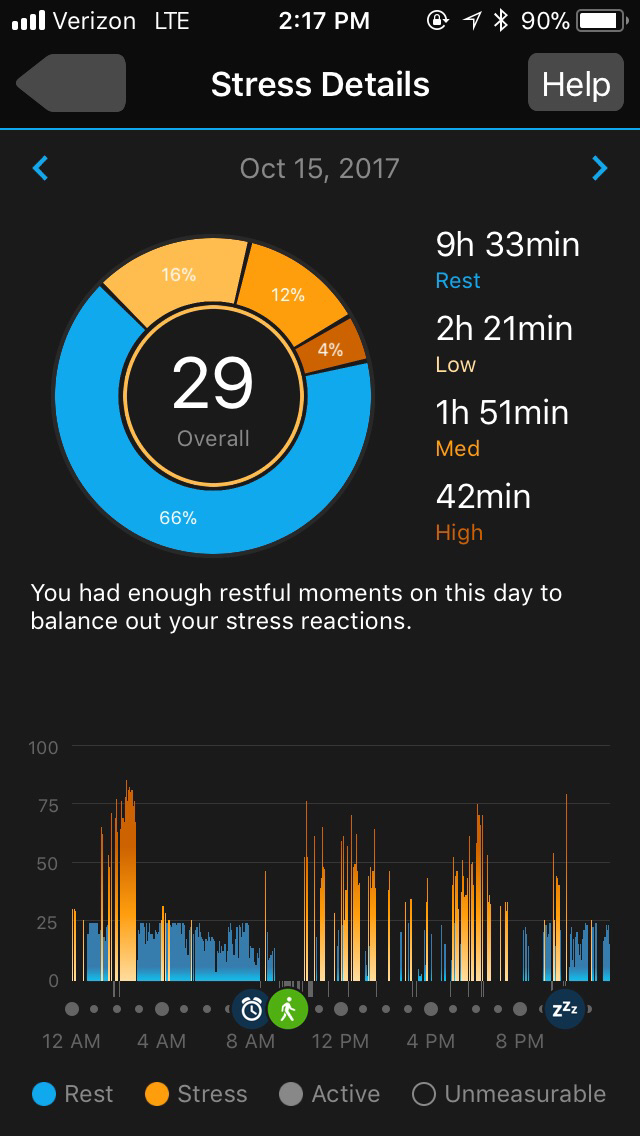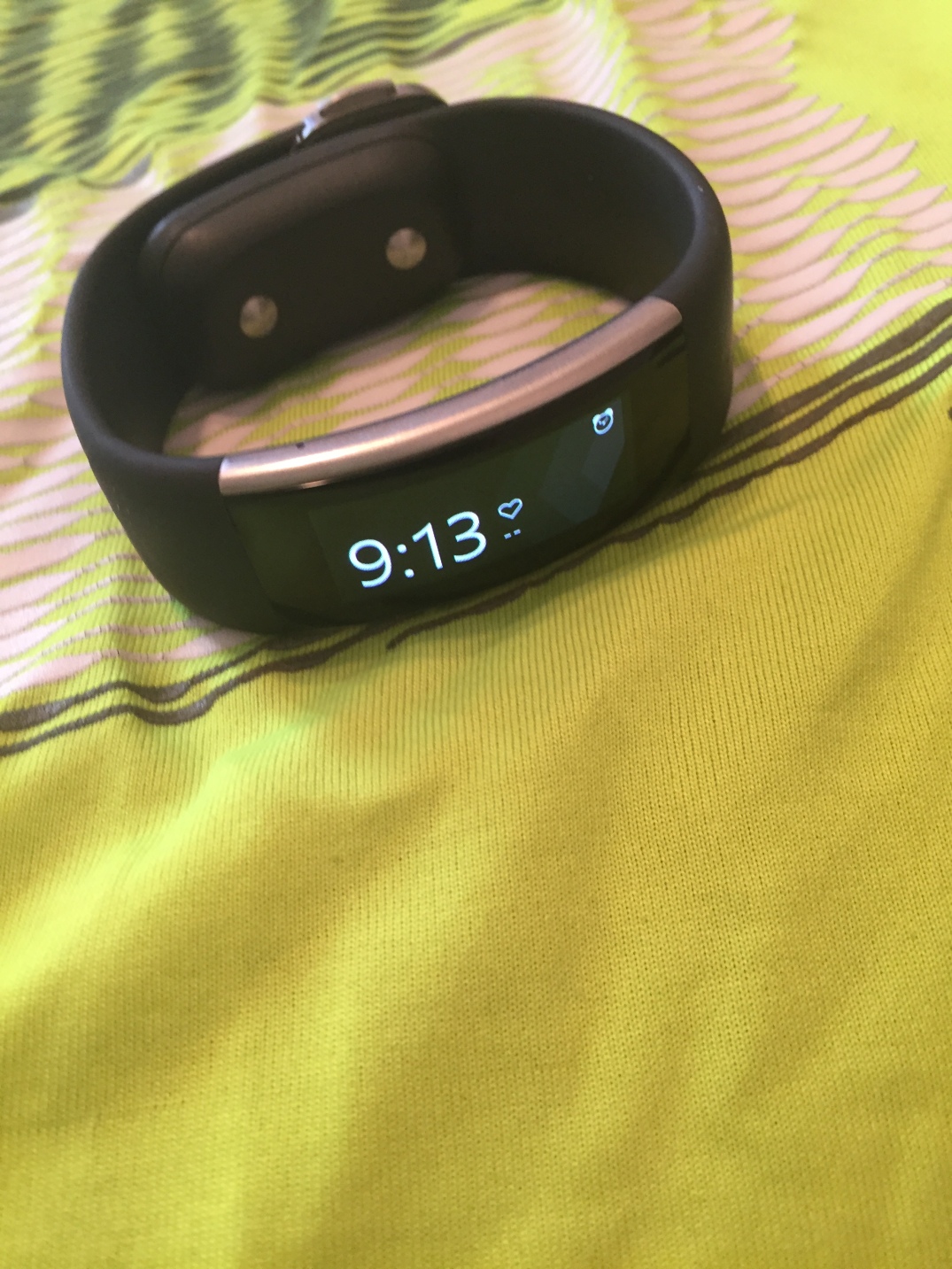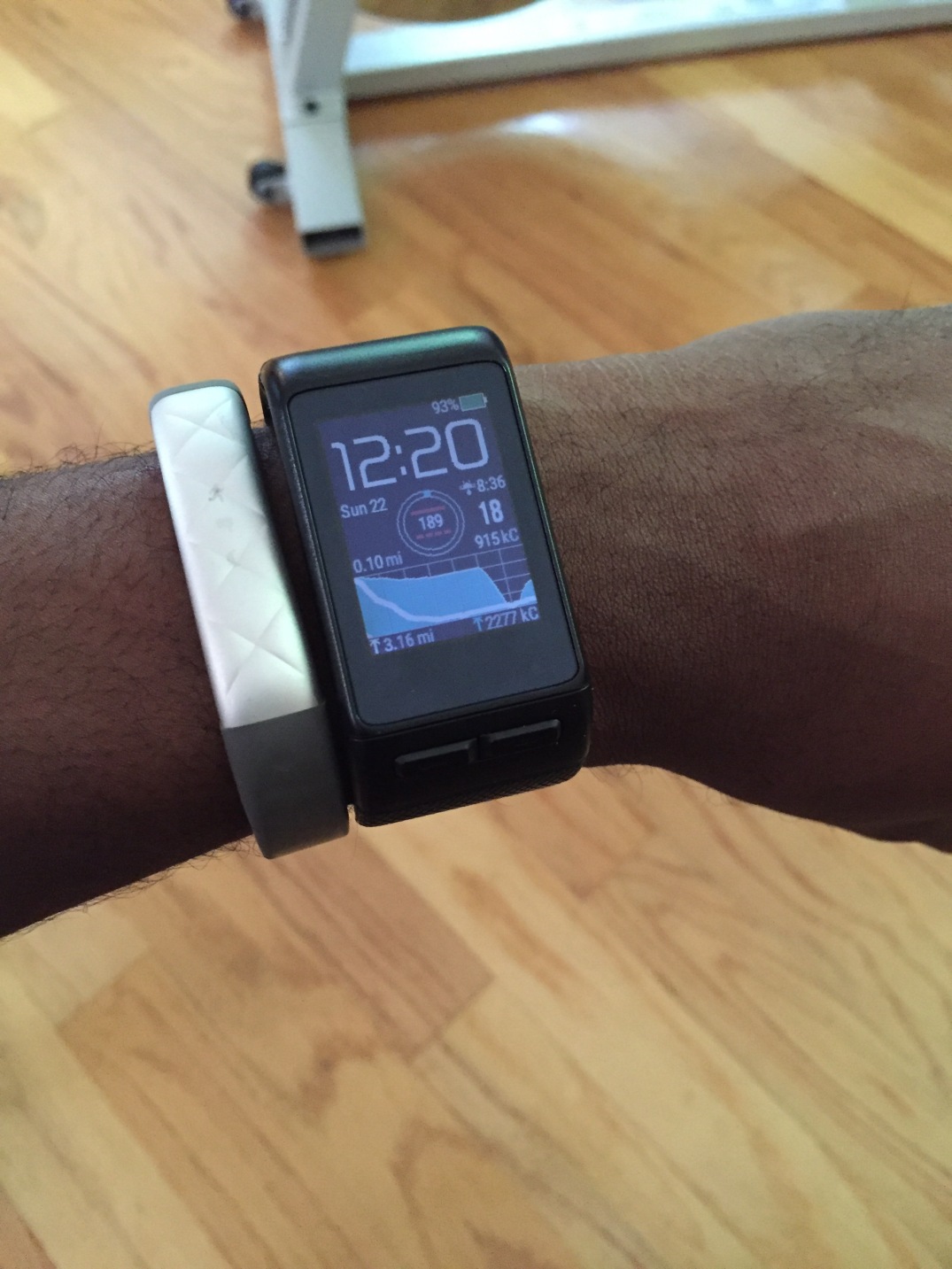The Biostrap is a fairly new device within the fitness tracking market. Most people probably haven’t heard of Biostrap because you can’t buy it in stores or on Amazon but only directly from Biostrap. The device features a 3 axis accelerometer, gyro, and is 5 ATM waterproof, It also packs a clinical grade red+infrared PPG heart rate sensor that measures heart rate, blood oxygen saturation, respiratory rate, heart rate variability, and sleep analysis. Also, depending on which package you purchase, a shoe clip comes with the Biostrap. You see, one of the main features of Biostrap is it can automatically classify certain activities that you perform. The shoe clip helps the device to further determine what activity you’re engaging in and therefore, more accurately track that activity as it packs a 3-axis accelerometer and gyro.
Daily Use
The Biostrap is actually a “pod” itself that you put inside of a band which you then strap onto your wrist. The pod is pretty secure within the band. The band however, doesn’t stay so secure on your wrist. The clasp on the band has come undone numerous times causing the band to fall off my wrist. Luckily I haven’t lost the device but I can clearly see how someone could easily lose it. The Biostrap is so comfortable on your wrist you can forget it’s there. Which means, when Biostrap comes off of your wrist, you might not notice. I quick search of the internet and you’ll see that many people have lost their devices and complained about this. Biostrap has recognized this problem and released a new band with a better clasp, but it cost $30. EDIT: I lost my Biostrap due to the faulty clasp. It fell off my wrist while bar hopping for my birthday and I wasn’t able to find it. Since Biostrap is waterproof, you don’t have to take it off except to charge it. This allows you to get a more complete view of your health and track your activity and movement. Note that you only wear the shoe clip when you’re about to perform some type of activity or workout. There is no display on the Biostrap, so you have to get all of your health related information within the app. Syncing the device is a real pain. The sync process takes way too long and many times when you’re syncing the device the connection drops. You can have the pod literally sitting next to your phone and the device will drop the connection while syncing. Additionally, the battery life isn’t stellar. I average about two days of battery before I need to charge it, but I work out every day usually twice a day. Overall, Biostrap tracks your steps, sleep, active calories, resting heart rate, heart rate variability, respiratory rate, and oxygen saturation. These measurements are all displayed once you open up the app. Additionally, the app will give you activity level recommendations based on your sleep, resting heart rate and heart rate variability measurements.
Sleep Tracking
Sleep tracking offers up a wealth of knowledge. During sleep is when Biostrap takes the most important readings and gives you feedback in regard to your readiness to exert yourself working out. The sleep page gives you a sleep score, provides a break out of the time spent in the different sleep stages, resting heart rate variability, resting heart rate, sleep latency and sleep disturbances. It also charts your heart rate, heart rate variability, blood oxygen saturation, and respiratory rate which are all captured while you sleep. Simply beautiful. There is one major problem with the sleep tracking. Biostrap doesn’t automatically track sleep. You have to start and stop this activity within the app similar to how you would track an activity (workout). This is a huge pain as sometimes you’ll definitely forget to start and stop the sleep tracking. And you can’t go back and add a missed sleep session or modify a sleep session. Also, syncing sleep is another pain point. The app takes forever to sync the sleep and constantly loses the connection. I’ve had times where it lost my sleep data because Biostrap wouldn’t sync properly. I hope Biostrap figures this out because as I said earlier, the most important readings are taken while you’re sleeping. EDIT: Biostrap released an update that enables the device to automatically track sleep.
Fitness Tracking
For Biostrap to track your fitness activity, you have to open up the app and select the activity you’re about to participate in and start the activity. To get the most out of the activity tracking you’ll want to wear the shoe clip. Biostrap does NOT track your heart rate while exercising. I really have no idea why they don’t track heart rate, but you can pair the Biostrap with a Bluetooth heart rate monitor and use it to track heart rate during exercise. Personally, I think it’s very important to know your heart rate during exercise and I hope Biostrap enables this feature with a software update. In the meantime, I use Biostrap with the Polar OH1 forearm strap. Let me explain why this is so important. One day I played basketball for an hour and forty minutes or so and I tracked the activity with the Biostrap, Whoop and Fitbit Iconic (reviews for those coming soon!). I played 5 vigorous full court games on a high school sized court. The Biostrap reported 375 calories burned. The Whoop reported 1,126 calories burned while the Iconic reported 1,105 calories burned. That is a huge discrepancy in the calories burned and I can only assume it’s because Biostrap can’t tell that my heart is pounding from the constant stop and go sprinting. Big miss by Biostrap, but again, you can correct this by wearing some type of heart rate strap. But honestly, it somewhat defeats the purpose of buying a wrist based optical heart rate device.
If you select the general “workout” category (there are many to choose from), Biostrap will automatically classify your activity. Additionally, you can train Biostrap to recognize certain activities. For example, in weight training sessions Biostrap usually classifies exercises as upper or lower body exercises. You can train the device to recognize a bench press or bicep curl rather than just and upper body exercise. Once you’ve completed a workout and gone through the horrible sync process, you can view a workout and its corresponding data. Within the workout data, I appreciate that the app shows active time vs rest/inactive time and active calories burned. It would be nice if Biostrap had a screen that you can view and see your workout progress real time.
Conclusion:
The Biostrap is a cutting edge device. There aren’t many devices that track heart rate variability in a measurable way that can be used to determine your readiness to perform. Not to mention the ability to capture blood oxygen saturation and respiratory rate. Biostrap falls short on some fairly basic things like the wrist strap, active heart rate monitoring and Bluetooth syncing issues. Many of these things can be remedied with software and firmware updates, which lead me to feel like Biostrap was rushed to production.
Pros:
- Water proof
- Tracks multiple types of activities with automatic tracking classification
- PPG heart rate monitor allowing for heart rate variability, blood oxygen saturation and respiratory rate monitoring
- Tracks recovery with recommendations for exercise exertion and sleep improvements
- Shoe clip to help track exercises
- Ability to train the device and create custom exercise library
- Comfortable to wear
Cons:
- No GPS
- Wrist strap/clasp not secure
- No active heart rate monitoring during exercise (can pair a Bluetooth HR monitor)
- Syncing issues between the device and app
- Manual sleep tracking (FIXED)
- Shoe clip (have to remember to bring it for workouts and an item to potentially lose)
- No screen/display
- No phone notifications
- Battery life could be better
Is it worth buying? Maybe. If you’re a fitness enthusiast who works out frequently and you’re concerned with recovery and you know or understand what HRV, SPO2, and respiratory rates are all about and how they affect recovery. If you don’t, Biostrap does a good job of explaining them and why they’re important. But I say this because I feel like the device was rushed to production. It’s missing a few basic things that are essential or downright mandatory. That isn’t to say that these won’t be added with firmware updates and improved pod housing. But again, there aren’t many devices that track HRV out right now AND use that information to help keep you informed of your health and readiness to train. Whoop does this but it cost a small fortune. LifeTrak ZoomHRV does this also at a much cheaper price but I haven’t used the device so I can’t speak to it. Also, I’d like to note that their technical support team is superb. I had an instance where the device deleted one of my workouts and the support team reached out to me to let me know they were troubleshooting the issue before I could reach out to notify them.
I think the future is bright for Biostrap but I can’t whole heartedly recommend this device. The faulty clasp alone is enough to warrant looking elsewhere. I love the data provided by Biostrap but can’t justify buying another device knowing all the issues it has and the fact that the clasp isn’t strong enough to keep it on my wrist. I think Biostrap needs to fix the glaring issues with the device via updates and start to include the new wrist strap with the device or we’ll be waiting for Biostrap 2 to address these issues.
Thanks for reading!





















